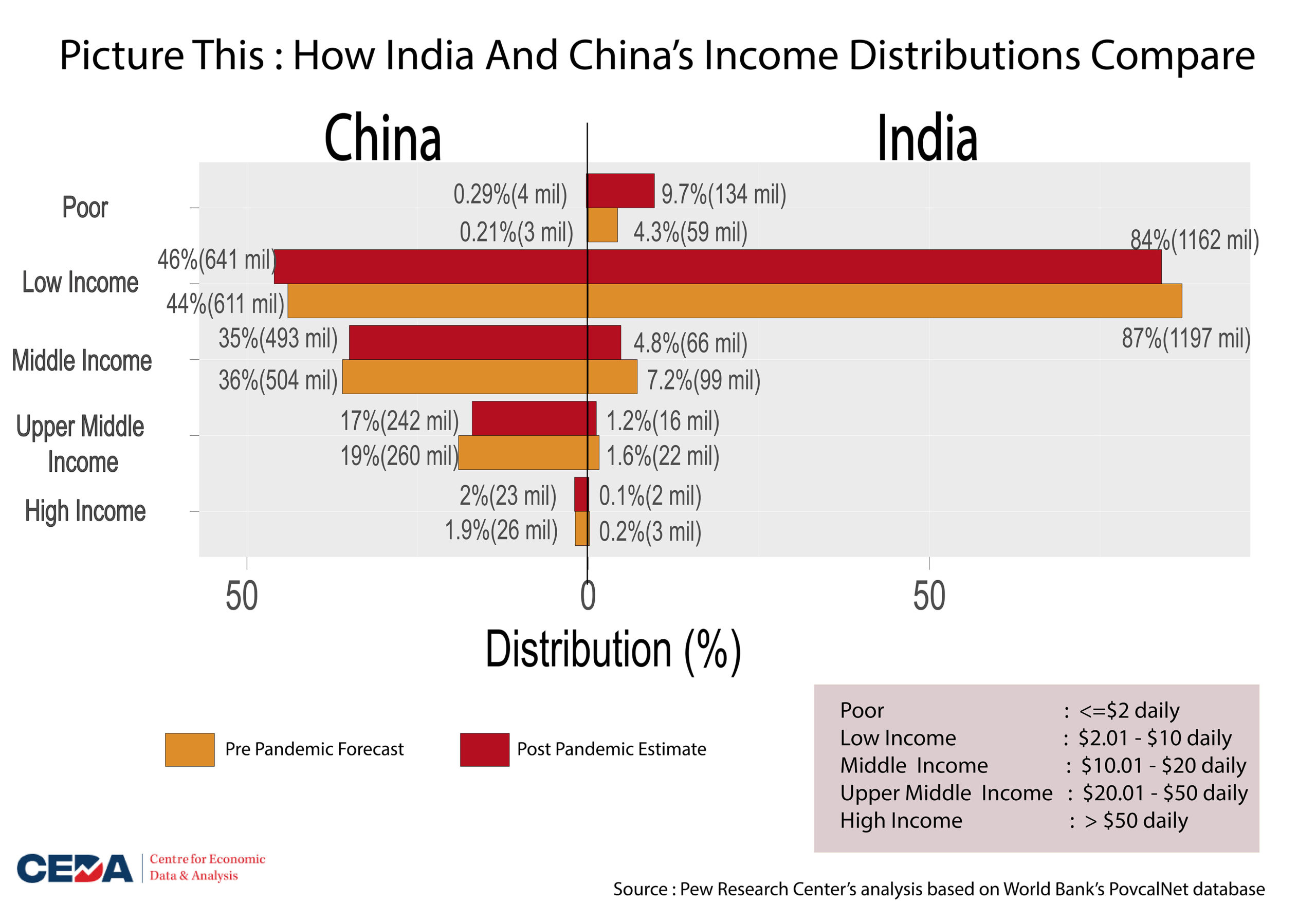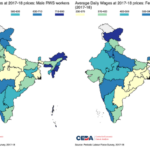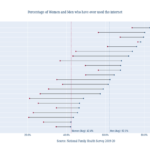Picture This: How India and China’s income distributions compare

The Pew Research Center analyzed the impact of the Covid-19 pandemic on India and China’s middle class. Owing to India and China’s large populations (one-third of global population), the changes in these two countries have an outsized impact on global numbers.
Yes, India and China have comparable population sizes (1,380 million and 1,404 million respectively) but how do the two countries compare when it comes to income distribution?
While China announced the end of extreme poverty in 2020, India is estimated to have 134 million people in the poor category (earning less than $2 a day). This is nearly 10% of India’s total population.
Nearly 84% of India’s population (1,162 million) is estimated to be in the low income category while only 4.8% (66 million) constitute the middle income category. On the other hand China has more than half of its population (54%) in the middle income, upper middle income or high income categories.
In this graph, the pre-pandemic income distributions are based on World Bank’s January 2020 forecast. The post-pandemic estimates are based on World Bank’s January 2021 report. The graph shows the wide chasm between India and China when it comes to prosperity, and highlights the role of the pandemic in further widening the difference. Check out this data narrative for more.
For a deeper study of how the Covid-19 pandemic influenced global inequality and how Indian and Chinese experiences differ, please refer to this paper by Angus Deaton.
If you wish to republish this article or use an extract or chart, please read CEDA’s republishing guidelines.







